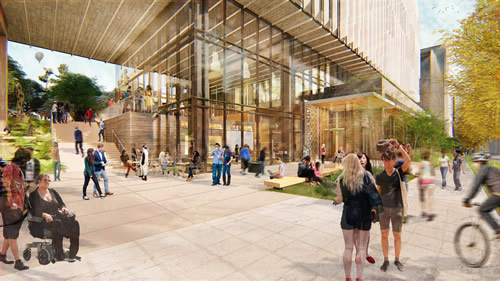University of Washington Breaks Ground for Health Building
The University of Washington in Seattle, WA, recently broke ground on their new Population Health Building. The new building will create spaces that are devoted to interdisciplinary activity and research that influences the health of people around the world. The Institute for Health Metrics and Evaluation, Department of Global Health, and portions of the School of Public Health will all call the Population Health Building Home.

Funded by both private donations and earmarked funds, the new facility is being handled by The Miller Hull Partnership with Lease Crutcher Lewis as the general contractor. The estimated completion date for the new building is sometime in 2020.